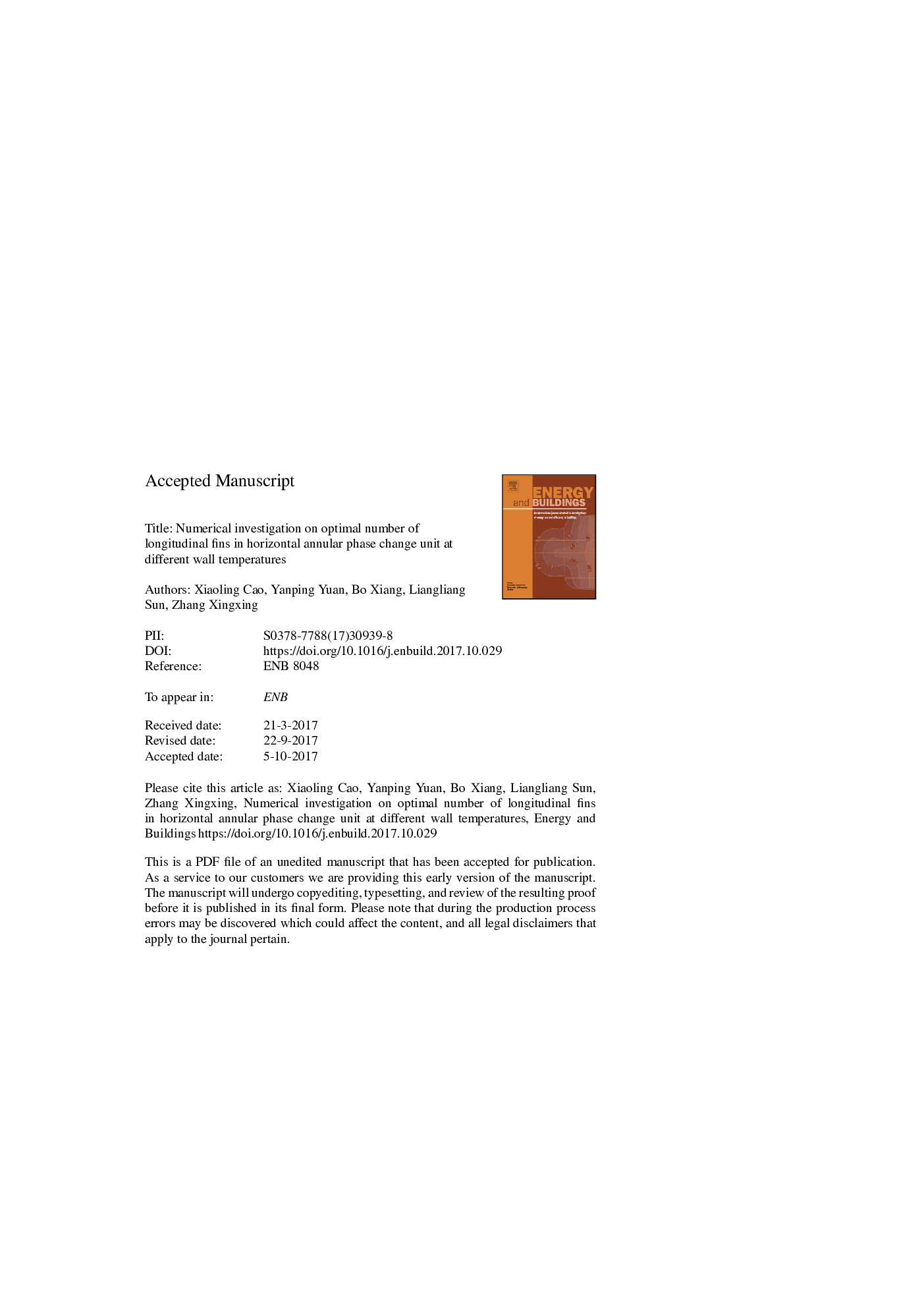| Article ID | Journal | Published Year | Pages | File Type |
|---|---|---|---|---|
| 6729412 | Energy and Buildings | 2018 | 30 Pages |
Abstract
The number, shape, and size of the fins utilized in a phase change unit form the key parameters affecting the heat transfer process in the unit. To the best of our knowledge, there are no relevant literature reports on the optimal number of fins in a horizontal annular phase change unit for different wall temperatures. To investigate the correlation between the number of fins and the wall temperature, in this study, based on a numerical simulation using the enthalpy-porosity model, we examine the phase-change material (PCM) melt with different numbers of installed fins (n = 4, 6, 8, 10, 12) at five different constant wall temperatures. The calculated results are analyzed and compared with those of the case without fins. The study results indicate that the addition of fins can effectively accelerate the PCM melting rate and shorten the melting time; further, the wall temperature also significantly affects the melting rate. We define the time-average Nusselt number (Nu¯) as an indicator of heat transfer efficiency to analyze the heat transfer mechanism. The influence of the fin number and wall temperature on Nu¯ and the variation in Nu¯ at different stages of the melting process are investigated. According to the variation in the average wall heat flux, it can be concluded that the fin number has an optimal value for a specific wall temperature. The optimal number of fins according to this study is 10.
Related Topics
Physical Sciences and Engineering
Energy
Renewable Energy, Sustainability and the Environment
Authors
Xiaoling Cao, Yanping Yuan, Bo Xiang, Liangliang Sun, Zhang Xingxing,
